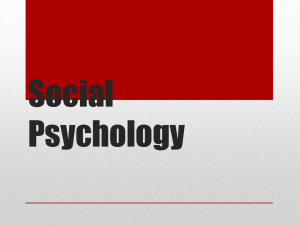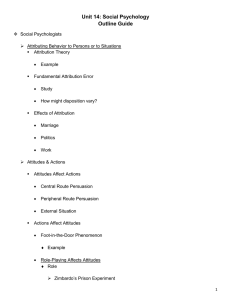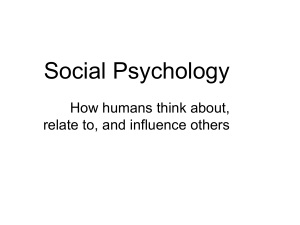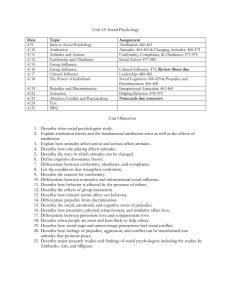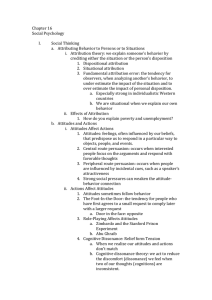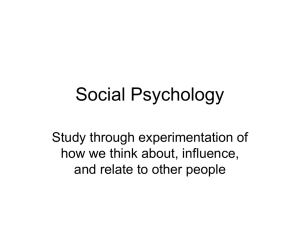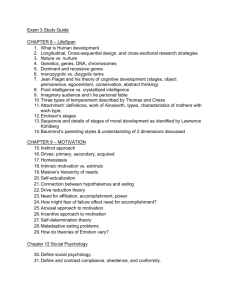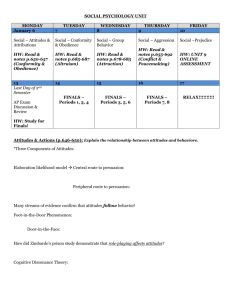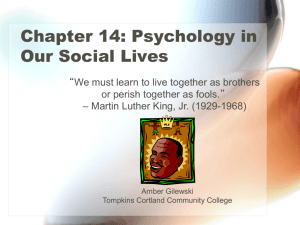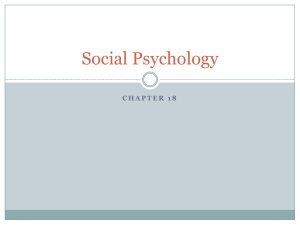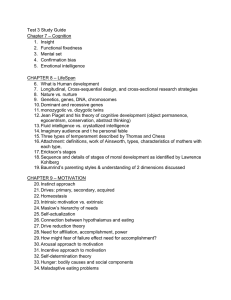Chp.16 PowerPoint File
advertisement
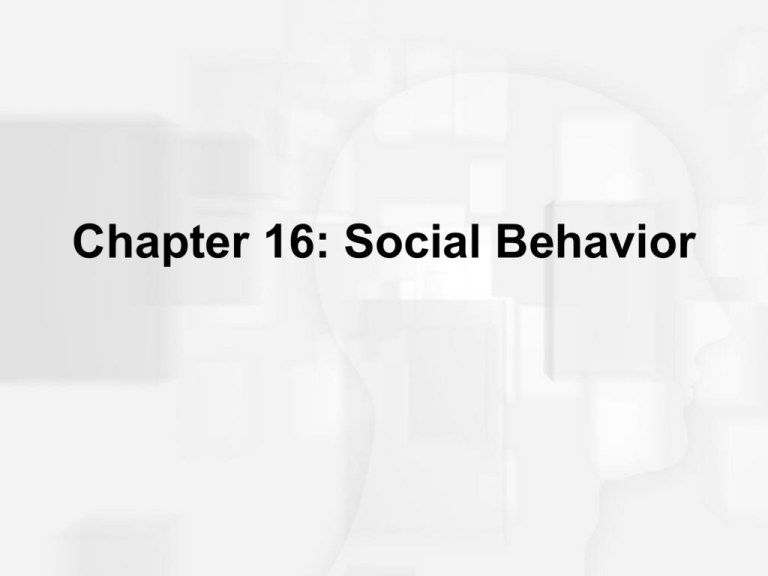
Chapter 16: Social Behavior Social Psychology • • • • • • Person perception Attribution processes Interpersonal attraction Attitudes Conformity and obedience Behavior in groups Person Perception: Forming Impressions of Others • • • • • • Effects of physical appearance Cognitive schemas Stereotypes Prejudice and discrimination Subjectivity in person perception Evolutionary perspectives Figure 16.1 Examples of social schemas Attribution Processes: Explaining Behavior • Attributions – Internal vs. External – Kelley’s covariation model • Biases in attributions – Fundamental attribution error – Defensive attribution – Self-serving bias • Cultural influences Figure 16.4 An alternative view of the fundamental attribution error Close Relationships: Liking and Loving • Key factors in attraction – Physical attractiveness – Matching hypothesis – Similarity – Reciprocity – Romantic Ideals Close Relationships: Liking and Loving • Perspectives on love – Hatfield & Berscheid – Passionate vs. Companionate love – Sternberg - Intimacy and commitment – Hazen & Shaver – Love as attachment • Evolutionary perspectives – Mating priorities Figure 16.7 Infant attachment and romantic relationships Attitudes and Attitude Change • 3 components – cognitive, affective, and behavioral • Factors in changing attitudes – source, message, and receiver • Theories of attitude change – Learning theory – Dissonance theory – Self-perception theory – Elaboration likelihood model Figure 16.9 The possible components of attitudes Figure 16.10 Overview of the persuasion process Figure 16.12 Design of the Festinger and Carlsmith (1959) study Figure 16.13 Bem’s self-perception theory Yielding to Others: Conformity • Conformity – Solomon Asch (1950s) – Classic experiment • Group size • Group unanimity Yielding to Others: Obedience • Obedience – Stanley Milgram (1960s) – Controversial landmark experiment – “I was just following orders” • presence of a dissenter Behavior in Groups: The Influence of Other People • The bystander effect - Darley and Latane (1968) – Diffusion of responsibility • Group productivity and social loafing • Decision making in groups • Polarization • Groupthink Figure 16.18 The effect of loss of coordination and social loafing on group productivity Figure 16.21 The three potential components of prejudice as an attitude Figure 16.22 Relationship between prejudice and discrimination Figure 16.23 Bias in the attributions used to explain success and failure by men and women
